Part 1 of Chapter 9 in the book Looks
In this chapter, Dr. Patzer talks about the dark side of physical attractiveness. He tells us facts about anorexia, bulimia, and other unhealthy behavior that may occur.

Deleese Williams
The chapter starts with talking about a woman named Deleese Williams. He describes her like this.
Her jaw was deformed, crooked teeth crowded her mouth, her eyes drooped, and her breasts were hard to find.
She had a childhood of endless horror. Her classmates made fun of her. Her marriage was a disaster, with her husband abusing her and letting her know constantly that she wasn’t much to look at.
Williams had hope when she heard about Extreme Makeover. This was a reality program that gave ugly people like Williams the gift of beauty. People enjoyed watching that show, for whatever reasons. Anyway, she applied to the show in 2003. The producers were delighted. Soon, Williams was meeting with the executives and team. Describing it, she said that the psychologist and the physicians told her that she “needed” her eyes lifted, her ears pulled back, and breast implants as well as chin implants. They also concluded that dental surgery was needed. They promised her that the free makeover would “transform her life and destiny.”
 However, the producers wanted to let the audiences see how being ugly is so very problematic. Beauty is good, and its absence is bad, after all. Remember our first post? They sat Williams in front of a camera and had her describe how being ugly had invited the cruel teasing and abuse by her husband. Even though her family didn’t notice (or pretended not to notice) her ugliness, they were coached to focus on her flaws.
However, the producers wanted to let the audiences see how being ugly is so very problematic. Beauty is good, and its absence is bad, after all. Remember our first post? They sat Williams in front of a camera and had her describe how being ugly had invited the cruel teasing and abuse by her husband. Even though her family didn’t notice (or pretended not to notice) her ugliness, they were coached to focus on her flaws.
Kellie McGee, Williams’s sister, was reluctant to trash her sister. The producers essentially forced her to do so, however.
It was tough for Deleese to take. She thought it would be all worth it. Williams believed that her real life could begin at last… happy endings.
Then the bomb fell.
A producer told her that the makover, cosmetic surgery… all off. Why? It didn’t fit in the show’s time frame. The doctors told her that the recovery time and surgery would take a much longer time than the duration of the show.
The tragic part, says her attorney, was that she became too ashamed to go out in public. Even worse, her sister, who had been forced to speak disparagingly about Williams’s looks, killed herself. She had beens struggling with bipolar disorder for some time.
ABC and Disney offered their condolences, yet said that they bore no responsibility since Deleese had known that they could call the whole thing off at any time.
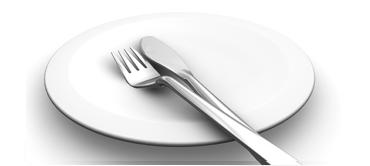 Beyond this example, physical appeal centered media messages continues to encourage unhealthy conditions on millions.
Beyond this example, physical appeal centered media messages continues to encourage unhealthy conditions on millions.
Eating disorders have become common in America. This is accompanied by a preoccupation with food and weight, and those with an ED often share physical symptoms with those who have experienced starvation. This is also marked by an obsession with food.
In 2003, a team led by Dr. Hans Steiner of Stanford University learned that mothers with eating disorders demonstrated greater concern over their children’s eating habits. By the time the children were age 5, they displayed the same symptoms found in teenagers with eating disorders. He was surprised to learn that half of the children of elementary age wanted to weight less. Three-fourths cited their family as the primary source of dieting related information.
There are three distinct types of eating disorders, not counting EDNOS.
1. Binge eating
2. Bulimia Nervosa
3. Anorexia Nervosa
 Binge eating is uncontrolled eating. It’s frequent, and very common. It’s accompanied by the feeling of being out of control. People who binge eat often feel depressed, guilty, or disgusted when they do so.
Binge eating is uncontrolled eating. It’s frequent, and very common. It’s accompanied by the feeling of being out of control. People who binge eat often feel depressed, guilty, or disgusted when they do so.
I know a few girls who have problems with binge eating. In fact, I know a lot. However, in their case, the binge is followed by a purge. This brings us to bulimia nervosa.
The Gale Encyclopedia of Medicine has described this condition as a serious, life-threatening eating disorder affecting mainly young women. They eat large amounts of food, then try to lose all the calories by fasting, exercising, or vomiting or using laxatives. This is known as “purging.” At first, it was hailed as a new weight loss trick. The women could eat whatever they want, and then throw it up later. They’re not gaining any calories, and they still get the cravings down, right?
Wrong. This is an extremely unhealthy practice. It’s even considered a psychiatric illness.
 Over 2 million people suffer from this. In rare instances, bingeing can cause the stomach to burst. Purging brings heart failure from loss of vital minerals. Vomiting leads to acid-related scarring of the fingers (once I saw a site where a girl, knowing this, encouraged her friends to vomit using the end of a toothbrush instead of their fingers). The esophagus becomes inflamed from acid burns. There’s also irregular menstruation, to name only a few.
Over 2 million people suffer from this. In rare instances, bingeing can cause the stomach to burst. Purging brings heart failure from loss of vital minerals. Vomiting leads to acid-related scarring of the fingers (once I saw a site where a girl, knowing this, encouraged her friends to vomit using the end of a toothbrush instead of their fingers). The esophagus becomes inflamed from acid burns. There’s also irregular menstruation, to name only a few.
Few are able to stop this behavior without professional help. It seems to me that they have really lost control. 90% are women in their teens or early 20s. Many live secret lives in that they appear to be doing well on the outside, but run off after meals to purge in their bathrooms.
The root causes remain mysterious. Maybe it could be genetic and environmental. It could be due to family pressures, like in the case of one girl I know. Girls with eating disorders often have fathers, mothers, brothers, or boyfriends who criticize their weight.
I do know some people who are bulimics but starve themselves for periods. This brings us to anorexia nervosa, a still more dangerous condition.
 Anorexia nervosa is self-induced starvation. The person with it refuses to eat. Even though she’s becoming thinner and thinner, she still sees herself as far too heavy. A few starve themselves to death, but most have life-shortening health disorders from lack of nutrients.
Anorexia nervosa is self-induced starvation. The person with it refuses to eat. Even though she’s becoming thinner and thinner, she still sees herself as far too heavy. A few starve themselves to death, but most have life-shortening health disorders from lack of nutrients.
This disorder brings the highest mortality rates of any psychiatric illness. 6% to 10% die. That’s a higher rate than for cancer. It’s the most challenging disorder to treat, as it involves dealing with the physical and emotional issues as well as with body image distortion.
Dr. Joel Jahraus, a nationally known expert on eating disorders, talked about one of his patients. Her name was Anna Westin, and he described her as a lovely young woman. However, she struggled with anorexia nervosa. Her body weight was dangerously low, and her moods changed fast. Dr. Jahraus, seeing this, recommended hospitalization.

Anna Westin
However, the insurance company didn’t want that. They said that she wasn’t ill enough to get hospitalized. For a brief time, though, they agreed. She was stabilized with IV nutrition and psychological work. After that, the company declared that she should be treated as an outpatient. When Anna found out, she lost motivation to continue treatment. “I can’t be that bad,” she said.
A few weeks later, Anna intentionally took her own life by swallowing an overdose of diet pills.
Her parents established the Anna Westin Foundation, which was dedicated to the prevention and treatment of eating disorders and raising public awareness to the cause. This included the Anna Westin House, which combines treatment with cost-effective care. Maybe it’s something you should look into.
I have also seen many sites raised to help those struggling with eating disorders. No, it’s not what you think. These sites offer tips (links not for the faint-hearted) on how to purge without parents and friends finding out. There’s lots of tips on how to disguise that you’re starving yourself, with pictures of bony celebrities as inspiration to starve. Many of these girls, looking for acceptance, turn to these sites to find it. At least they’ll find someone who understands what they’re going through, they think. They’re encouraged by words like, “Stay strong! Starve on!” Sometimes these words are what keeps them going when they’re discouraged. After a while, they start believing that they are not ill. No, it’s a lifestyle choice.
 The danger in real recovery is that if one of the girls (or guys) visit the sites, they’ll lose their resolve and continue with the “lifestyle.” Their friends will berate them for not being strong enough and not starving like they’re supposed to. I knew a girl who was the biggest tip giver for anorexics and bulimics. She got tons of comments and praise for her “smartness and courage.” And then all of a sudden, something happened. She decided that this wasn’t the way to go. She decided that this could not continue, and she better get healthy as opposed to skinny before she lost it all.
The danger in real recovery is that if one of the girls (or guys) visit the sites, they’ll lose their resolve and continue with the “lifestyle.” Their friends will berate them for not being strong enough and not starving like they’re supposed to. I knew a girl who was the biggest tip giver for anorexics and bulimics. She got tons of comments and praise for her “smartness and courage.” And then all of a sudden, something happened. She decided that this wasn’t the way to go. She decided that this could not continue, and she better get healthy as opposed to skinny before she lost it all.
She lost her audience. People didn’t say anything. They ignored her. For a person who had received upward of 50 comment per post, that was hard for her.
It’s so easy to shatter.
Just looking at the pictures of celebrities that these girls use to keep them starving, don’t tell me that the media has no hand in it. I remember when one of the celebrities (forgot her name) was said to have an eating disorder. There was buzz, and many of my friends praised her as an inspiration and a strong woman for trying to starve herself to perfection.
I felt nauseated.
We shouldn’t be focused on our own bodies when we have this in the world. We shouldn’t be pushing ourselves to starve to skeletons when there actually are children in Africa who have no choice but to starve every single day of their lives. 26,000 children perish every day due to preventable causes: poverty, disease, and hunger.
Maybe the problem is that we’re too used to looking at ourselves instead of others. We gaze at ourselves in the mirror, and we fail to see the crisis happening around us.

A starving child in Uganda


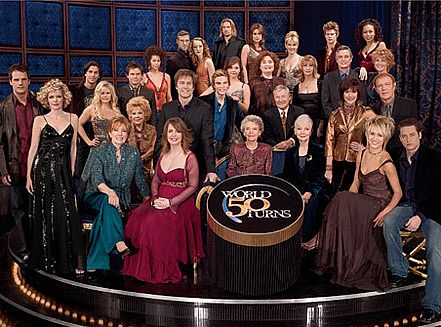
 What about TV news? You probably might have noticed that these men and women are garbed perfectly, with perfect makeup, teeth, and hair. They’re also trim, not fat, and good-looking on the whole. I also noticed that in Fox news, most of the females are blonde and blue-eyed, with fair skin.
What about TV news? You probably might have noticed that these men and women are garbed perfectly, with perfect makeup, teeth, and hair. They’re also trim, not fat, and good-looking on the whole. I also noticed that in Fox news, most of the females are blonde and blue-eyed, with fair skin.



 From a journalist’s point of view, the role of news programs is to inform the public about what’s going on in the world around them, instead of running repetitive stories about attractive people. This is a shameful use of network time. Dr. Patzer agrees, saying that a democracy functions because when something goes wrong, the press brings it to the public’s attention so they can correct this problem at the ballot box.
From a journalist’s point of view, the role of news programs is to inform the public about what’s going on in the world around them, instead of running repetitive stories about attractive people. This is a shameful use of network time. Dr. Patzer agrees, saying that a democracy functions because when something goes wrong, the press brings it to the public’s attention so they can correct this problem at the ballot box.




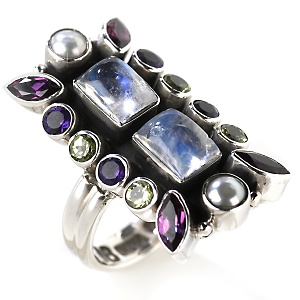
 These two professors did a second study to validate the results of the first study. The enhancing product this time was perfume. The problem-solving product they used was dandruff shampoo. For some reason, although the average looking model was perceived as having a more normal life than the attractive one, the highly attractive model was perceived as more trustworthy. Maybe because people think that an attractive person acts because he/she wants to, whereas the unattractive is seen as more easily coerced and manipulated? Who knows?
These two professors did a second study to validate the results of the first study. The enhancing product this time was perfume. The problem-solving product they used was dandruff shampoo. For some reason, although the average looking model was perceived as having a more normal life than the attractive one, the highly attractive model was perceived as more trustworthy. Maybe because people think that an attractive person acts because he/she wants to, whereas the unattractive is seen as more easily coerced and manipulated? Who knows?
 Next, only the women who believed in the ideal “thin” body felt anxious at seeing the images. It’s what you might expect. They felt less anxiety after seeing the average size models.
Next, only the women who believed in the ideal “thin” body felt anxious at seeing the images. It’s what you might expect. They felt less anxiety after seeing the average size models. Researchers found the most body-image related messages in videos like Cinderella and The Little Mermaid. However, all ages get information about the world from TV. IF there’s one rule governing media images, it’s that sex sells.
Researchers found the most body-image related messages in videos like Cinderella and The Little Mermaid. However, all ages get information about the world from TV. IF there’s one rule governing media images, it’s that sex sells. 




 Whether or not that is true, it’s found that the diet industry generates 74 billion – 50 billion DOLLARS a year. Women compare their bodies to those around them. a 1984 poll by Glamour found that three-fourths of those surveyed thought they were too fat. This brings to mind my friend who always wants to lose weight, even though she is really skinny. I’m a 4 foot 8 girl, and naturally I’m very very skinny. (It goes with my frame.) She told me once that she wanted to be as skinny as I was. I was disturbed.
Whether or not that is true, it’s found that the diet industry generates 74 billion – 50 billion DOLLARS a year. Women compare their bodies to those around them. a 1984 poll by Glamour found that three-fourths of those surveyed thought they were too fat. This brings to mind my friend who always wants to lose weight, even though she is really skinny. I’m a 4 foot 8 girl, and naturally I’m very very skinny. (It goes with my frame.) She told me once that she wanted to be as skinny as I was. I was disturbed.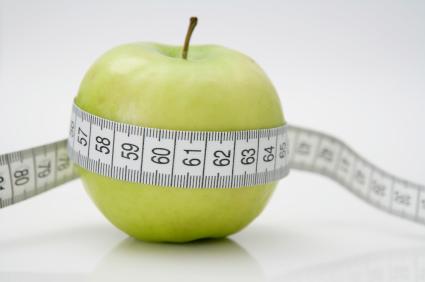 Cindy Maynard, a registered dietitian and researcher, says that this dissatisfaction occurs so much that it’s almost considered normal. She goes on to say that the most vulnerable people are teenagers, since they are at the age when they’re developing their self-confidence and self-perception. At that age there’s a lot of pressure to fit in.
Cindy Maynard, a registered dietitian and researcher, says that this dissatisfaction occurs so much that it’s almost considered normal. She goes on to say that the most vulnerable people are teenagers, since they are at the age when they’re developing their self-confidence and self-perception. At that age there’s a lot of pressure to fit in.
 Interestingly enough, those with much physical appeal suffer more than their less attractive coworkers when the boss is angry or upset. Professors and students at North Central College observed that attractive females are punished more harshly. Attractive males are punished the least. For the unattractive, gender made no difference. Maybe businesses have a love-hate relationship with beauty. Maybe the boss has ideas of fairness, or envy may cause ill will to smolder. In other words, this could be a backhanded recognition that physical attractiveness opens doors that remain closed to the average, less attractive person.
Interestingly enough, those with much physical appeal suffer more than their less attractive coworkers when the boss is angry or upset. Professors and students at North Central College observed that attractive females are punished more harshly. Attractive males are punished the least. For the unattractive, gender made no difference. Maybe businesses have a love-hate relationship with beauty. Maybe the boss has ideas of fairness, or envy may cause ill will to smolder. In other words, this could be a backhanded recognition that physical attractiveness opens doors that remain closed to the average, less attractive person. Another study was done by a professor and a doctoral student at Hofstra University. They gave bank supervisors a memo describing a problem with a male or female employee portrayed as attractive, unattractive, or average. They asked the bank supervisor to assist them in disciplining this person. They found that some attractive people are viewed as failing because of a lack of effort, while the unattractive are seen as victims of bad luck.
Another study was done by a professor and a doctoral student at Hofstra University. They gave bank supervisors a memo describing a problem with a male or female employee portrayed as attractive, unattractive, or average. They asked the bank supervisor to assist them in disciplining this person. They found that some attractive people are viewed as failing because of a lack of effort, while the unattractive are seen as victims of bad luck. Smoking induces premature aging. Smoking makes you older, faster. Don’t smoke, kids.
Smoking induces premature aging. Smoking makes you older, faster. Don’t smoke, kids.  If you have excess fat and skin: Well, ok, this is a good idea. Localized fat deposits may require liposuction. It can help restore your self-esteem and sexiness. Getting a procedure might help you feel better about yourself and bring the romance back in the relationship. I have no argument against this type of surgery, actually. There was this guy who was really morbidly obese. He was on Oprah’s talk show. Anyway, he decided that he should have a change for the better. He lost all the weight, but there was all this loose skin and some fat flapping around. He ended up having surgery, and he looked amazing. It really helped him out there.
If you have excess fat and skin: Well, ok, this is a good idea. Localized fat deposits may require liposuction. It can help restore your self-esteem and sexiness. Getting a procedure might help you feel better about yourself and bring the romance back in the relationship. I have no argument against this type of surgery, actually. There was this guy who was really morbidly obese. He was on Oprah’s talk show. Anyway, he decided that he should have a change for the better. He lost all the weight, but there was all this loose skin and some fat flapping around. He ended up having surgery, and he looked amazing. It really helped him out there. You also need to have lots of moolah. In one of my other blogs, I wrote about the
You also need to have lots of moolah. In one of my other blogs, I wrote about the  We all laughed, because we knew what he meant.
We all laughed, because we knew what he meant. An article in the Journal of Applied Psychology stated that short men start any interview with immediate strikes against them, even when the hiring decision is being made by a manager with high experience.
An article in the Journal of Applied Psychology stated that short men start any interview with immediate strikes against them, even when the hiring decision is being made by a manager with high experience.  They found that greater height boosted the subjective ratings of work performance. We’re talking about literally hundreds of dollars of earning advantage simply because the person is tall. The researchers wonder if being tall boosts self-confidence and thus improving performance. Who knows?
They found that greater height boosted the subjective ratings of work performance. We’re talking about literally hundreds of dollars of earning advantage simply because the person is tall. The researchers wonder if being tall boosts self-confidence and thus improving performance. Who knows? The exception is when beautiful women compete for jobs that are traditionally associated with masculine qualities like strength, endurance, and exercising good judgement under pressure. For example, being a truck driver. Maybe it is because people view female physical attractiveness with femininity. Therefore an attractive woman would be viewed as less capable of meeting requirements for masculine qualities. This bias also extends to manager positions. If a highly attractive woman reaches a manager position, it’s viewed as luck. But if it’s an unattractive woman, then it’s because of her ability rather than anything else.
The exception is when beautiful women compete for jobs that are traditionally associated with masculine qualities like strength, endurance, and exercising good judgement under pressure. For example, being a truck driver. Maybe it is because people view female physical attractiveness with femininity. Therefore an attractive woman would be viewed as less capable of meeting requirements for masculine qualities. This bias also extends to manager positions. If a highly attractive woman reaches a manager position, it’s viewed as luck. But if it’s an unattractive woman, then it’s because of her ability rather than anything else.

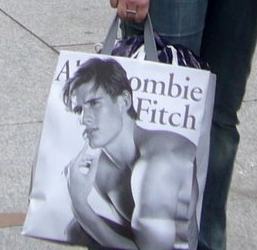
 Cosmetic Surgery for Dummies
Cosmetic Surgery for Dummies Defining the terms that you’ll see: The plastic in plastic surgery isn’t the plastic Lego that you trip on all the time in your son’s room. The “plastic” comes from a Greek word “plastikos” which means to shape and mold. Plastic surgeons mold your body and skin to make you easier on the eyes.
Defining the terms that you’ll see: The plastic in plastic surgery isn’t the plastic Lego that you trip on all the time in your son’s room. The “plastic” comes from a Greek word “plastikos” which means to shape and mold. Plastic surgeons mold your body and skin to make you easier on the eyes.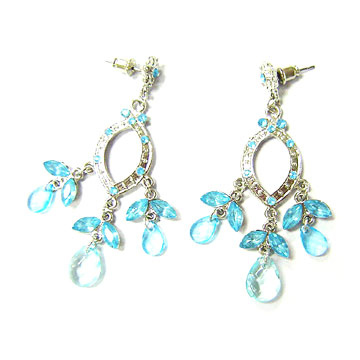 Here are the details: they tried to enlarge my ear canal so that the ear drum wouldn’t be blocked, and also so I could pick up more sound. Another guy tried to make it look like a real ear by taking skin grafts from my hips and cartilage from one of my ribs. He said that the rib would grow back, but it hasn’t, so long afterwards. It still doesn’t look like an ear, but I’ve learned to accept it. This may be the golden age of cosmetic surgery, but we’re still nowhere near perfect. Even now they tell me that there’s really nothing more they can do to make it look more like a real ear.
Here are the details: they tried to enlarge my ear canal so that the ear drum wouldn’t be blocked, and also so I could pick up more sound. Another guy tried to make it look like a real ear by taking skin grafts from my hips and cartilage from one of my ribs. He said that the rib would grow back, but it hasn’t, so long afterwards. It still doesn’t look like an ear, but I’ve learned to accept it. This may be the golden age of cosmetic surgery, but we’re still nowhere near perfect. Even now they tell me that there’s really nothing more they can do to make it look more like a real ear.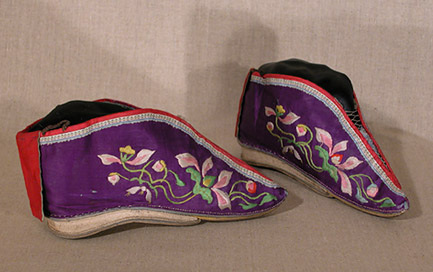 An example would be the bound feet that Chinese women considered beautiful in days long gone by. Now we’d think that
An example would be the bound feet that Chinese women considered beautiful in days long gone by. Now we’d think that 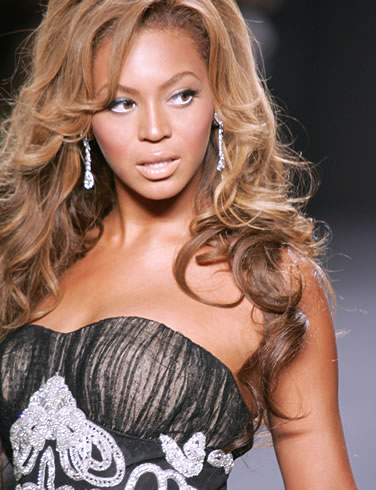
 Whoa. So having an “ugly” nose means great suffering? Get it fixed? “I need to fix my small breasts, they’re deformed.” What?
Whoa. So having an “ugly” nose means great suffering? Get it fixed? “I need to fix my small breasts, they’re deformed.” What? Yes. They expect more attractive children to perform better. As a result, the teachers devote more attention to children whom they think have greater potential. And because the teacher expects better stuff out of them, the children actually DO better.
Yes. They expect more attractive children to perform better. As a result, the teachers devote more attention to children whom they think have greater potential. And because the teacher expects better stuff out of them, the children actually DO better.
 Obesity is a national plague. Children between the ages of 6 to 11 are three times as likely to be overweight as in 1970. Obesity has come to rival smoking as a source of premature death. People who were obese when young have a greater frequency of psychological symptoms and emotional problems than people who only became obese when older.
Obesity is a national plague. Children between the ages of 6 to 11 are three times as likely to be overweight as in 1970. Obesity has come to rival smoking as a source of premature death. People who were obese when young have a greater frequency of psychological symptoms and emotional problems than people who only became obese when older. There is hope for the bullied. Whitehead and Hoover found out that the most successful programs combine diet and exercise within a framework of significant behavior change. The programs should be implemented with schools, families, and doctors.
There is hope for the bullied. Whitehead and Hoover found out that the most successful programs combine diet and exercise within a framework of significant behavior change. The programs should be implemented with schools, families, and doctors. Periodic student evaluations came in not a long time ago. These factor greatly into tenures and promotion. However, it seemed that looks were more important than teaching ability. I have been to ratemyprofessors.com to check the ratings of the professors I’ve had, and I saw that the ratings of a professor I loved in a class I enjoyed were very negative. A lot of the posts mentioned her rather unkempt appearance.
Periodic student evaluations came in not a long time ago. These factor greatly into tenures and promotion. However, it seemed that looks were more important than teaching ability. I have been to ratemyprofessors.com to check the ratings of the professors I’ve had, and I saw that the ratings of a professor I loved in a class I enjoyed were very negative. A lot of the posts mentioned her rather unkempt appearance.